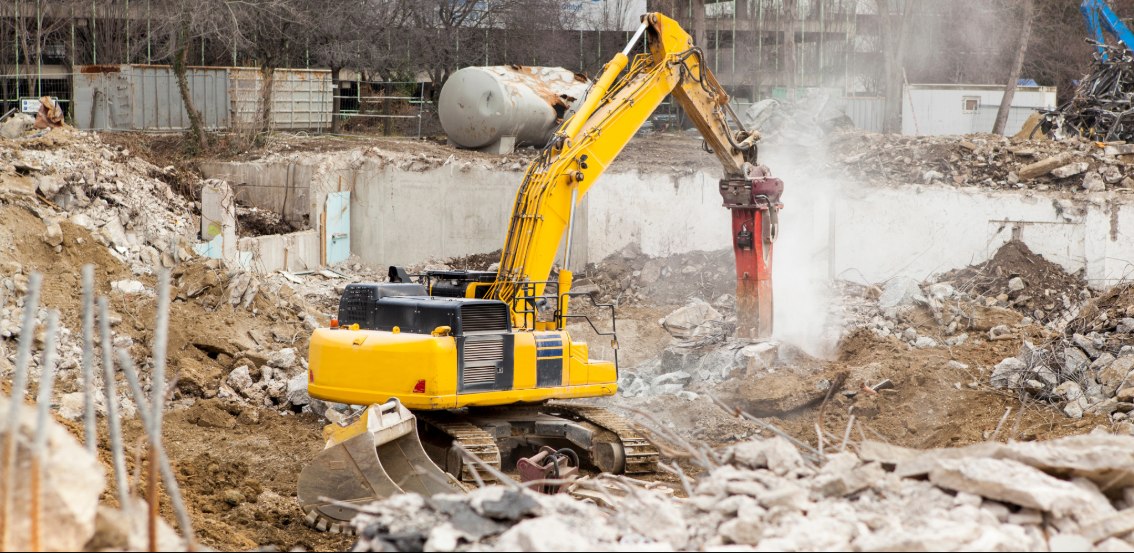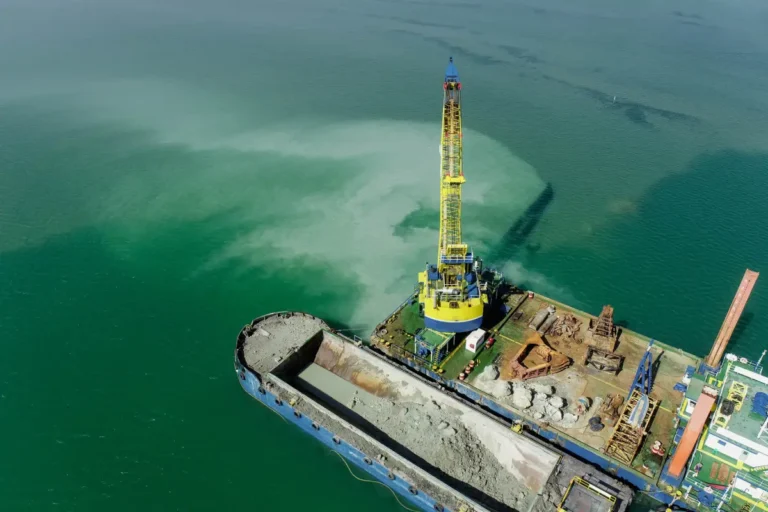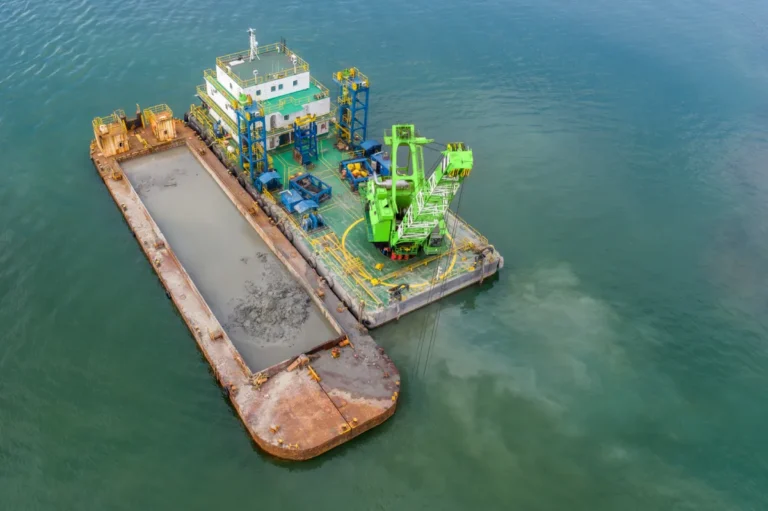Hydraulic dredging is a highly efficient method used across industrial and environmental applications to remove and transport sediment through slurry pipelines. Unlike mechanical excavation, hydraulic dredging relies on the core working principle of using a combination of suction, pumps, and pipelines to create a continuous flow of material. With the right hydraulic dredging equipment, including a cutterhead, suction pipe, pump, and discharge system, this technique offers scalable solutions for mining, wastewater management, ecosystem restoration, and port maintenance. This guide examines the comprehensive scope of hydraulic dredging, encompassing equipment selection, operational planning, performance optimization, and regulatory compliance.
Beyond Buckets: How Hydraulic Dredging Actually Works
Hydraulic dredging is a continuous excavation and material transport process that utilizes water flow to remove sediment from underwater environments and transport it to designated discharge locations. Unlike mechanical methods that rely on buckets or clamshells, the core working principle of hydraulic dredging is based on creating a slurry—a mixture of solids and water—that is pumped through a pipeline system.
The operation begins with a cutterhead or suction nozzle positioned at the dredge head. In environments with compacted material, the cutterhead loosens the sediment before it is drawn into the suction pipe. For softer materials, a plain suction head may suffice. Once the sediment enters the suction line, it is pulled into a dredge pump, typically a high-powered centrifugal pump designed to handle abrasive and dense slurry.
From the pump, the mixture flows into a pipeline system that transports the slurry to a disposal, treatment, or dewatering site. These pipelines can extend several kilometers, depending on the site configuration, and may include booster pumps to maintain pressure and flow rate over long distances.
This process enables continuous material transport through slurry pipelines, significantly increasing operational efficiency compared to batch-style mechanical dredging. The closed-loop system of hydraulic dredging also helps minimize surface disturbance and reduce turbidity when properly managed.
Understanding Hydraulic Dredging Equipment: What Powers the System
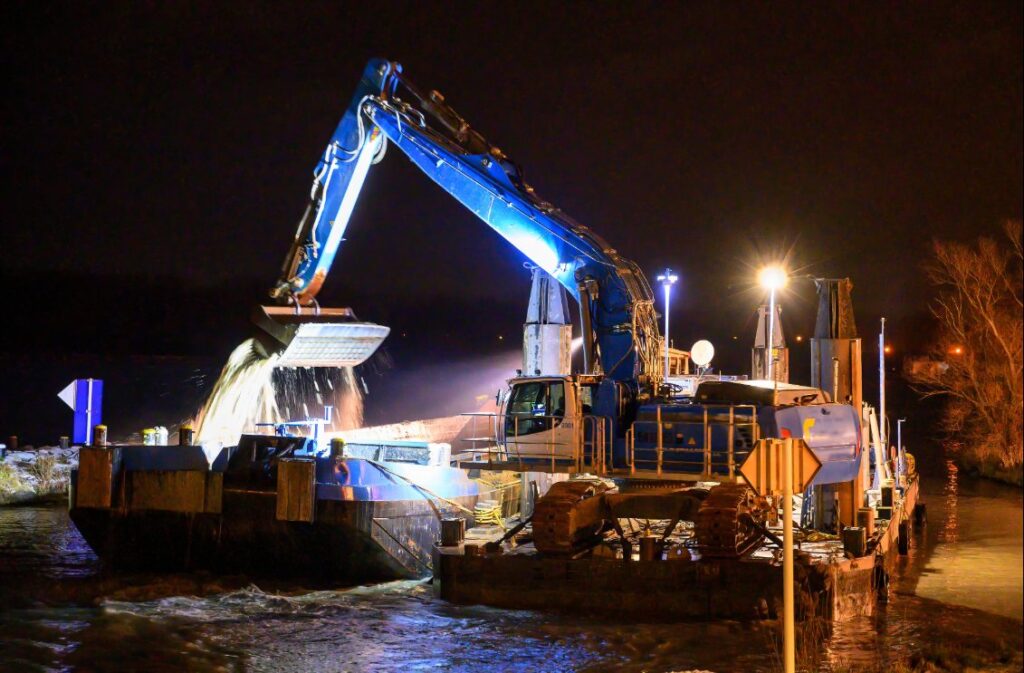
Hydraulic dredging systems utilize a combination of standard and specialized equipment, designed to remove sediment efficiently while operating in diverse environmental and industrial conditions. At the heart of every hydraulic dredging system are critical components that support the core working principle: using fluid dynamics to create a slurry and transport it through pipelines.
A typical hydraulic dredging setup comprises the components of a hydraulic dredge, including the cutterhead, suction pipe, pump, and pipeline. These elements work in sync to enable continuous material transport through slurry pipelines, which is fundamental for large-scale dredging operations.
Dredge pumps are the primary power drivers of hydraulic dredging. These are usually high-capacity centrifugal pumps engineered to handle abrasive and high-solid-content slurries. Depending on the dredging depth and distance to the discharge point, pumps may be mounted onboard the dredge or located at booster stations along the pipeline. Some configurations also include submerged pump units for improved suction efficiency at greater depths.
The choice between cutterhead attachments vs. plain suction nozzles depends on the material type and site conditions. Cutterheads are used to agitate and break down compacted or consolidated materials, making them suitable for hard-packed sediment, clay, or industrial sludge. Plain suction nozzles are more effective in soft, free-flowing materials such as silt or sand, where mechanical agitation is not required.
When it comes to power sources, hydraulic dredging equipment is generally powered by either diesel or electric systems. Diesel-powered hydraulic dredges provide mobility and are ideal for remote or offshore projects without access to a power grid. Electric-powered dredges, on the other hand, provide lower operational emissions and reduced noise levels, making them preferable for urban, environmentally sensitive, or long-duration applications.
Selecting the right configuration and equipment setup ensures optimal performance, reduced downtime, and adherence to the principles explained in Beyond Buckets: How Hydraulic Dredging Actually Works.
Built for the Job: Matching Hydraulic Dredges to Site Conditions
Selecting the right hydraulic dredging system requires a clear understanding of site-specific factors, including water depth, sediment characteristics, and physical access constraints. These variables directly influence the choice of dredge type, system configuration, and operational efficiency.
In shallow or restricted environments, compact dredges with low draft profiles are often required. In contrast, deeper projects or sites involving highly compacted material may demand larger hydraulic dredging equipment equipped with powerful pumps and heavy-duty cutterheads. The **components of a hydraulic dredge—cutterhead, suction pipe, pump, and pipeline—**must be selected to match both the dredging depth and the sediment load to ensure effective operation.
Sediment type is a crucial factor in selecting the appropriate equipment. Fine silts and sand can typically be removed using plain suction heads, while clay, gravel, or industrial waste requires the mechanical agitation provided by cutterheads. This ties directly into the core working principle of hydraulic dredging, which is to convert sediment into a manageable slurry for continuous material transport through slurry pipelines.
Access to the site also plays a key role in equipment selection. Remote, swampy, or highly urbanized locations may benefit from portable hydraulic dredge systems that can be trucked or floated into place and assembled on-site. These systems are modular, easier to mobilize, and ideal for short-duration or variable-location projects. In contrast, stationary hydraulic dredging systems are better suited for long-term operations in stable environments such as industrial ponds, wastewater treatment facilities, or port maintenance dredging.
Different applications call for specific design adaptations. Inland dredging projects often require lightweight, maneuverable equipment that can operate in narrow canals or reservoirs. Coastal operations must account for wave action, tides, and corrosive saltwater conditions, often requiring more robust construction and corrosion-resistant components. Confined waterways, such as urban channels or lined ponds, necessitate precision control and minimal disturbance, making electric-powered, low-emission systems a better fit.
Moving the Masses: Slurry Transport and Dewatering Logistics
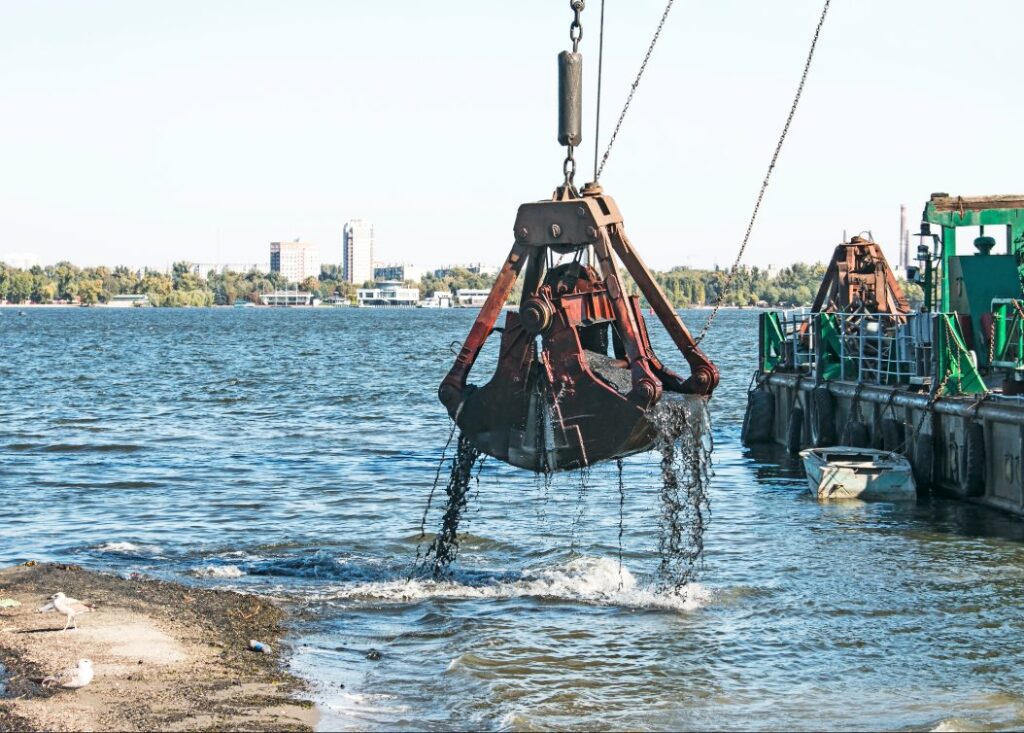
Efficient material transport is central to the success of hydraulic dredging operations. Once sediment is converted into slurry using the core working principle of hydraulic dredging, it must be reliably conveyed from the excavation point to the designated discharge or processing area. This is accomplished through a closed-loop system of continuous material transport through slurry pipelines, minimizing material loss and surface disruption.
The process begins with the slurry being drawn in by the components of a hydraulic dredge—primarily the cutterhead, suction pipe, pump, and pipeline. The dredge pump propels the slurry through high-density polyethylene (HDPE) or steel discharge pipelines that are routed either over water or land. The distance, elevation change, and slurry composition all affect the flow dynamics and pump selection.
In long-distance dredging operations, friction losses and pressure drops are inevitable. To address this, booster pumps are strategically installed along the pipeline. These pumps help maintain the necessary pressure to keep slurry moving at the required velocity, preventing sedimentation and pipeline clogging. Booster pump stations can be powered by diesel or electric motors, depending on site logistics and environmental considerations.
At the endpoint, the slurry must be separated into solid and liquid components for final handling. Common dewatering methods used in conjunction with hydraulic dredging include geotextile tubes, settling ponds, mechanical presses, and polymer-assisted flocculation systems. The choice of method depends on material type, available space, and regulatory requirements. For instance, geotextile dewatering is often used in environmentally sensitive areas due to its minimal footprint and passive operation.
When the Environment Comes First: Eco-Focused Hydraulic Dredging
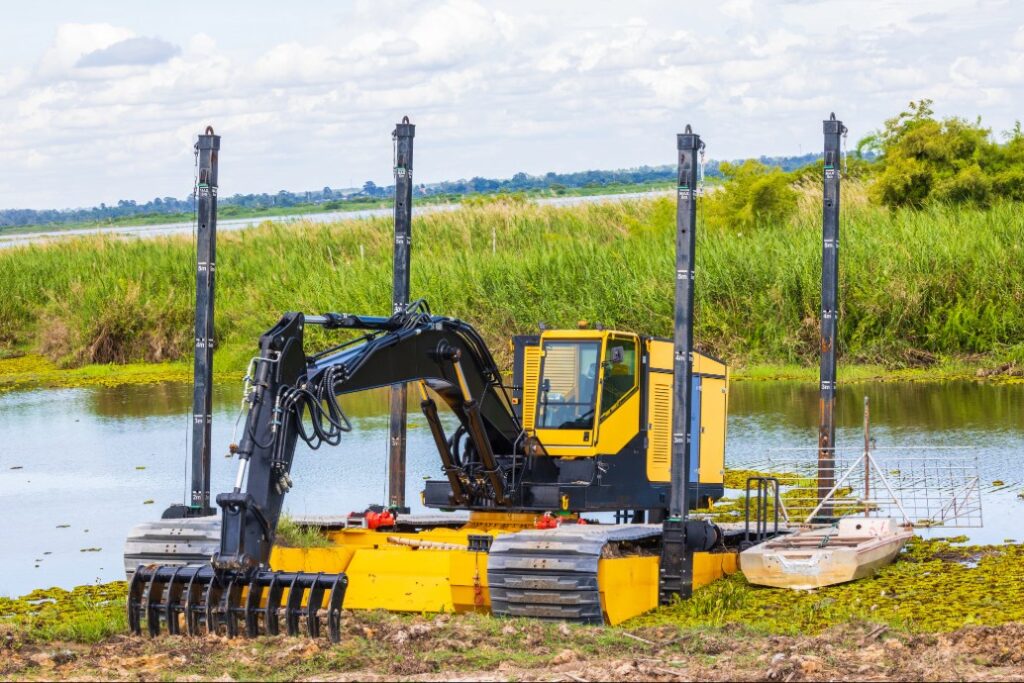
Hydraulic dredging is increasingly chosen for environmentally sensitive projects due to its low-impact excavation process and closed-loop transport system. By relying on the core working principle of hydraulic dredging—converting sediment into slurry and transporting it through pipelines—it avoids many of the disruptive effects associated with mechanical methods. This controlled approach is ideal for operations where minimizing ecological disturbance is a priority.
One of the key advantages lies in its ability to limit surface disruption and turbidity, especially when combined with properly selected components of a hydraulic dredge, such as low-turbulence cutterheads and enclosed slurry transport pipelines. This setup ensures continuous material transport through slurry pipelines, reducing the chance of resuspending contaminated or fine sediments into the water column.
Wetland restoration is a prime example where hydraulic dredging is used to carefully reshape and rebuild degraded habitats without disturbing surrounding vegetation or wildlife. Likewise, the removal of contaminated sediment in urban harbors, industrial ponds, and rivers requires precision. The enclosed nature of hydraulic dredging helps prevent the spread of hazardous materials during extraction and transfer.
In water quality improvement projects, such as lake dredging or the removal of nutrient-rich sediment, hydraulic dredging enables the selective targeting of accumulated sludge layers while preserving aquatic ecosystems.
To further mitigate impact, projects often implement turbidity control techniques and sediment containment systems, such as silt curtains, floating barriers, and real-time turbidity monitoring. These systems work in tandem with the hydraulic dredge to confine disturbed sediments and maintain compliance with environmental regulations.
The Industrial Muscle of Hydraulic Dredging
Hydraulic dredging plays a vital role in a range of industrial applications that require high-efficiency sediment removal and transport. Its ability to move large volumes of material through a closed system aligns with both operational demands and environmental controls. Leveraging the core working principle of hydraulic dredging, these operations rely on the precise integration of the components of a hydraulic dredge—cutterhead, suction pipe, pump, and pipeline, to enable continuous material transport through slurry pipelines.
In mining operations, hydraulic dredging is used to extract sand, gravel, and fine materials such as coal fines. Unlike mechanical methods that rely on repeated lifting and dumping, hydraulic dredges maintain a steady flow of mined material directly from the excavation site to processing facilities. This continuous flow minimizes handling, reduces operational costs, and improves material recovery rates.
Wastewater treatment plants also utilize hydraulic dredging for sludge removal. Over time, residual biosolids and grit accumulate in treatment basins and lagoons. Hydraulic dredges offer a non-disruptive solution for desludging, enabling operations to continue uninterrupted without requiring a complete shutdown. Their enclosed pipeline systems prevent odors and reduce the potential for spillage or environmental contamination.
In the energy sector, hydraulic dredging is critical for maintaining clear water flows at power plant intake and outlet structures. Blockages from sediment buildup can affect cooling system efficiency and lead to costly downtime. Using hydraulic dredging equipment ensures that these structures remain free of obstructions with minimal environmental impact, especially in continuous or large-scale operations.
For port maintenance and navigation channel deepening, hydraulic dredges provide a scalable and efficient method to maintain required depths. Their ability to move sediment continuously over long distances helps prevent delays in shipping operations and supports ongoing infrastructure development.
Efficiency Over Excavation: Performance Metrics That Matter
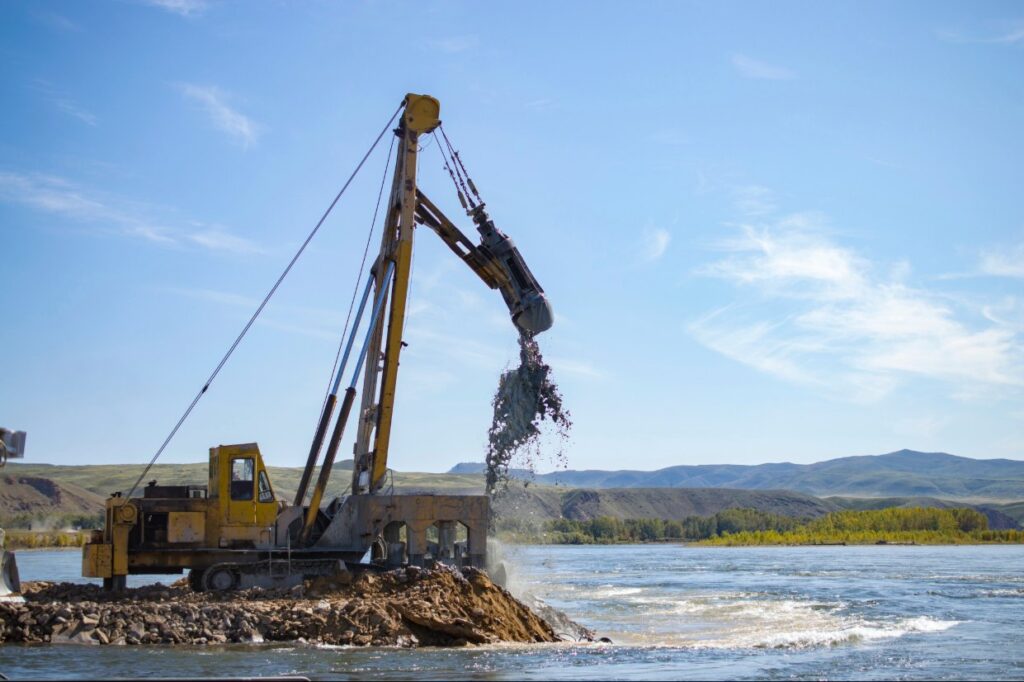
The volume of material moved does not solely measure the success of a hydraulic dredging operation, but by how efficiently and reliably it performs over time. Key performance metrics such as production rate, solids concentration, and fuel efficiency are central to evaluating the operational effectiveness of any project that follows the core working principle of hydraulic dredging.
Production rate—typically expressed in cubic meters or yards per hour—indicates how quickly material is removed from the site. Higher production rates can be achieved by optimizing the components of a hydraulic dredge, including the cutterhead, suction pipe, pump, and pipeline. These components work together to enable continuous material transport through slurry pipelines, reducing the need for manual handling or staging.
Solids concentration within the slurry is another important indicator of efficiency. A higher concentration means more material is being moved with less water, improving pumping effectiveness and reducing downstream dewatering costs. Achieving optimal solids concentration depends on cutterhead performance, pump capacity, and the ability to regulate flow without inducing blockages.
Fuel efficiency—especially in diesel-powered hydraulic dredging equipment—has a direct impact on both cost and carbon footprint. Systems designed with efficient hydraulic circuits, variable-speed drives, and modern control panels can significantly reduce fuel consumption per cubic meter of material dredged.
Minimizing downtime is critical for maintaining production targets. This is where wear-resistant hydraulic dredging equipment plays a crucial role. Utilizing abrasion-resistant materials in pumps and pipelines helps extend service intervals and minimize unscheduled maintenance. Properly engineered cutterheads also minimize wear in abrasive environments such as sand or gravel dredging.
Compliance Isn’t Optional: Permits, Safety, and Regulations
All hydraulic dredging operations—whether for environmental restoration, industrial maintenance, or navigational improvements—must adhere to strict regulatory frameworks. Compliance ensures project continuity, protects ecosystems, and safeguards the health of workers. Whether operating a hydraulic dredge on inland waters or along a coastal site, following applicable laws and standards is a non-negotiable part of any dredging project.
The permitting process typically begins with identifying the relevant regulatory bodies. In the United States, key agencies include the U.S. Army Corps of Engineers (USACE), Environmental Protection Agency (EPA), and state or local environmental departments. Depending on the project scope, permits may be required under the Clean Water Act (Section 404), National Pollutant Discharge Elimination System (NPDES), and Coastal Zone Management Act (CZMA), among others. These approvals define project boundaries, allowable working methods, and sediment handling requirements.
Worker safety is also a primary concern when using hydraulic dredging equipment. Operators must follow Occupational Safety and Health Administration (OSHA) guidelines, which include lockout/tagout procedures, confined space entry protocols, and PPE usage. Training in emergency response, equipment handling, and hazard identification is essential for minimizing risk when working with high-pressure systems, rotating cutterheads, and active slurry pipelines.
Environmental compliance extends beyond obtaining initial permits. Many projects require ongoing monitoring and documentation, including turbidity readings, sediment sampling, and post-dredge site evaluations. Failure to comply with these environmental compliance reporting requirements can result in costly delays or fines.
In any successful hydraulic dredging operation, adherence to regulations is just as important as pump performance or production metrics. It ensures that the hydraulic dredge operates within legal and environmental limits, protecting both workers and the surrounding habitats.
Challenges in the Field: What Can Go Wrong, and How to Prevent It
Despite its efficiency and adaptability, hydraulic dredging presents several field-level challenges that can disrupt operations if not properly managed. Understanding the potential risks and implementing preventative measures is essential to maintaining performance and avoiding costly downtime.
One of the most common issues is clogging within the suction line or discharge pipeline. This can result from oversized debris, low slurry velocity, or high solids concentration. When slurry flow drops below the critical velocity needed to keep particles suspended, blockages occur. To prevent this, operators should continuously monitor flow rates and adjust pump speeds as needed. Using appropriately sized screens or trash racks at the hydraulic dredge intake can also help minimize the entry of unwanted materials.
Wear is another significant concern, particularly when working with abrasive materials such as sand, gravel, or coal fines. Over time, the internal surfaces of hydraulic dredging equipment—especially the pump casing, impellers, and pipeline elbows—can erode, reducing efficiency and increasing the risk of failure. Selecting wear-resistant materials and scheduling regular inspections are critical maintenance strategies.
Misalignment between the cutterhead, suction pipe, and pump can compromise dredge performance. Inaccurate alignment not only reduces suction efficiency but can also accelerate wear and introduce vibrations. Regular calibration and proper deployment of positioning systems help maintain optimal orientation during dredging operations.
To improve system reliability, many operators now rely on the integration of smart dredge systems. Modern hydraulic dredging equipment often includes onboard diagnostics, real-time pressure sensors, and automated control systems. These technologies enable remote monitoring, detect abnormal conditions early, and support predictive maintenance strategies. Alerts for pressure drops, temperature spikes, or flow inconsistencies enable operators to take action before minor issues escalate into major disruptions.
By addressing these challenges through proactive maintenance and integrated monitoring, hydraulic dredging operations can maintain consistent output, minimize downtime, and extend the life of equipment across various industrial and environmental projects.
Planning a Hydraulic Dredging Operation: What Decision-Makers Need to Know
Effective planning is essential for the success of any hydraulic dredging project. Before deploying a hydraulic dredge, decision-makers must evaluate site-specific conditions, project goals, and logistical constraints to ensure operational efficiency and regulatory compliance.
The process begins with a thorough site assessment and sediment testing. This includes analyzing water depth, sediment type, grain size distribution, and potential contaminants. These findings directly influence equipment selection, such as the size and power of the dredge pump, the type of cutterhead, and the material of construction for wear-critical components. Accurate sediment characterization also determines the best method for slurry transport and dewatering.
Project scoping defines the overall parameters of the dredging effort. Key factors include the total volume of material to be removed, project duration, and options for sediment disposal or reuse. Whether the material is to be pumped to a containment area, treated off-site, or used for land reclamation, each disposal path requires compatible hydraulic dredging equipment and operational planning. Timelines should account for permitting, equipment mobilization, weather variability, and potential environmental constraints.
Cost considerations are also a central part of the planning process. While upfront costs for hydraulic dredging systems may be higher than those for mechanical alternatives, long-term operational savings often offset the initial investment. Hydraulic dredges enable continuous excavation and transportation, reducing downtime, minimizing labor, and enhancing material handling efficiency. In many cases, the reduced environmental footprint and fewer handling steps also lower total project costs.
When compared to mechanical dredging, hydraulic dredging offers a more scalable and less disruptive solution, especially for large volumes or remote locations. Proper planning ensures that the selected system aligns with both technical and budgetary requirements, maximizing the return on investment for industrial, municipal, or environmental dredging projects.
Bringing It All Together: Making Informed Decisions in Hydraulic Dredging
From environmental restoration to industrial-scale excavation, hydraulic dredging remains a proven solution for projects requiring precision, efficiency, and continuous material transport. Understanding the core working principle of hydraulic dredging and the functionality of essential components—such as the cutterhead, suction pipe, pump, and pipeline—enables better equipment selection and project planning. Whether navigating regulatory requirements, addressing site-specific challenges, or optimizing performance through real-time monitoring, a well-executed hydraulic dredging operation delivers reliable results with minimal disruption. When evaluating dredging options for your next project, consulting with experienced professionals and investing in the right hydraulic dredging equipment can help ensure long-term success.


